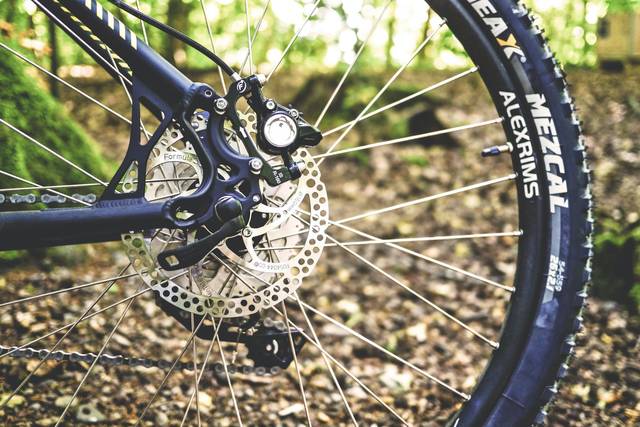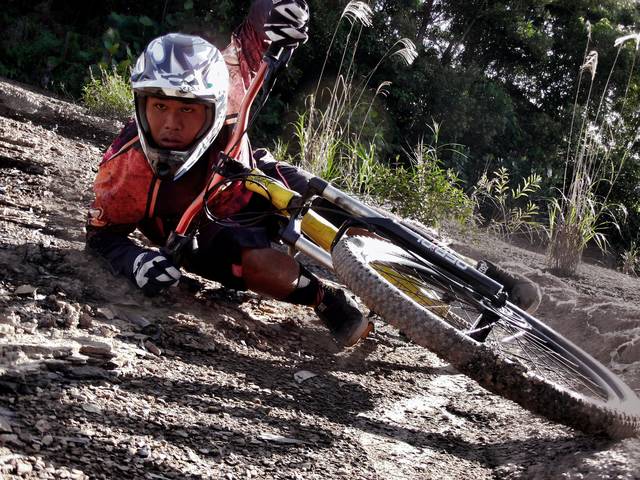As electric bike technology advances and more options become available, there is often a lot of curiosity around the question – can I ride a hybrid electric bike on trails?
These bikes are a supremely adaptable option to get you where you need to go, with traditional drivetrain components that ensure reliability and an added motor for some extra power.
Whether it’s rolling down pavement or taking on the trails, these two-wheelers make exploration effortless.
But will it be alright to take hybrid e-bikes on trails? Specially when you heard / read / know for a fact that trail riders get pretty upset about e-bikes sometimes.
In this blog post we’ll provide helpful guidance about riding a hybrid electric model so that you can confidently decide if one is right for you.
Quick Answer
Regulations governing e-bikes trail access can be very complex and often vary widely depending on the jurisdiction. But yes, you can ride a hybrid electric bike on trails. Class 1 e-bikes are generally accepted in most trails while prohibiting other classes like Class 2 or 3 models. Just be sure to stay below posted speed limits for your own peace of mind and that of those around you!
Are Electric Bikes Good For Trails?
Electric bikes, provide cyclists with a boost of power to help them conquer hills and other challenging terrain. Many trails are now open to e-bikers, although the rules vary from place to place.
The main benefit of an electric bike on a trail is that it can make difficult sections of terrain much easier.
This makes it ideal for novice riders who can take on more challenging trails than they could before.
E-bikes also let experienced riders cover more ground in a shorter amount of time, allowing them to explore further and faster.
One potential downside of electric bikes is that their extra power can be intimidating for other trail users.
Some worry that electric bikes may be unsafe on trails due to their higher speeds and more powerful motors. However, e-bikes typically have speed limits and can be ridden at a slower pace if necessary.
Overall, electric bikes are a great way for cyclists to explore trails with greater ease and efficiency.
So long as riders follow the trail regulations and use caution when riding, electric bikes can be an enjoyable addition to your outdoor experience.
What Are The Laws For E-bikes On Trails?
For mountain bikers interested in utilizing electric bikes, regulations governing eMTB trail access can be complex and vary widely depending on the jurisdiction.
While electric mountain biking is permitted throughout much of Florida, riders in Texas will find their options are much more limited.
On a federal level, electric bikes are categorized as motorized vehicles, thus allowing access to trails designated for both motorized and non-motorized use.
However, regulations often take this a step further by permitting Class 1 ebikes but not Class 2 or 3 models.
It behooves electric mountain bikers to stay abreast of regulations in order to ensure they remain within the law while exploring trails suitable for their eMTBs.
It is true that from a regulatory perspective, posted e-bike restrictions may not always reflect reality. To make matters even more confusing, how these rules are enforced are often very localized in nature.
From my personal experience, the key when it comes to riding electric bikes on trails lies in practicing restraint when it comes to speed.
Most of the time, if you’re going at or below the speed limit, then people won’t pay too much attention to whether or not you are using pedal assist or throttle power.
As long as you’re not being careless and reckless on the bike, chances are no one will bat an eye if they don’t realize you’re riding an ebike.
Unfortunately there is still a large degree of stigma attached to ebikes on trails with nearly identical arguments being raised against them as were posed against traditional mountain bikes decades ago such as erosion concerns, hazard of collisions and scare towards other cyclists.

Drivetrain Differences
Though mountain bikes can easily climb rough terrains thanks to their suitable gears and drivetrain. Most other bikes including hybrids also have gears that can be equally advantageous for them on such tracks.
But hybrids e-bikes may not have as low gear ratio as required by a mountain bike for off-road trails as normally they are to be used on city roads where a high gear ratio is required.
Most electric bikes are built for speed, ease of use, better pedal assist and comfort thus does not includes same level of drive train or gears dedicated to off road cycling.
This gearing configuration with a much higher point start gives it a great advantage in urban and sub urban environment but not on tough mountains.
This high gear ratio of hybrid e-bikes makes them unsuitable for rocky terrains with extreme irregularities. The large ring of the chain is another problem restricting them from performing like a mountain bike.
Further, there is the issue of the level of assist you can get off your e-bike motor. If you push it too hard you may drain your battery much faster than needed. Then there is additional risk due to higher speed.
Improper Suspension System
A mountain bike is subjected to extreme forces because of the uneven terrain they face. Suspensions provides you and the bike the shock absorbing ability to neutralize these forces.
Without much suspension a sudden jerk from rock and pavements might just hurt in the most sensitive place. A regular mountain bike has both front and rear suspension for added control and safety.
On the downside it unnecessary increase the weight of your bike. The rear suspension is mostly designed to be part of the frame; while the front suspension is much like you see in motorcycles.
Most electric bikes bikes that are commercially available in the market either don’t have much suspension or just that great in comparison to ones fitted on dedicated mountain bikes.
Don’t forget electric bikes are already heavier due to additional battery and motor. Most brands don’t add heavy double suspension to keep it light and more simple by design.
It is what makes them challenging for tough terrains. There is a lesser control and comfort riding electric bikes on trails, but are indeed thrilling and works just fine on most trails.

Precautions To Take When Trail Riding On A Hybrid Electric Bike
When trail riding on a hybrid electric bike, safety should always be your priority. It is essential to take appropriate protective measures, such as wearing a helmet and reflectors for improved visibility.
Inspect your bike thoroughly before every ride by ensuring that the tires are properly inflated, that the brakes are functioning properly, and that all other components of your bike are in good shape.
It is also important to check the terrain before beginning your ride and to modify speed or route if conditions change. Be aware of your surroundings at all times while riding, stop frequently if necessary, and follow the instructions of any signs or guides along the way.
Ultimately, with some common-sense precautions taken ahead of time, you can ensure a safe and enjoyable trail ride experience on a hybrid electric bike.
Riding a hybrid electric bike is not the same as riding a dedicated mountain bike, so it’s important to be mindful when hitting the trails.
Hybrid e-bikes can easily handle easier terrain and low speed technical sections, but more extreme trails are off-limits. It’s advisable to keep your assist level to a reasonable amount and try to set a slower pace – you don’t want your throttle to kick in at an inappropriate moment!
Many people are still new to e-bikes, so if you respect other trail users and remain conscious of your speed and usage of the assists, no one should object as long as you stay out of any dangerous zones or risky scenarios.

Practicality – Understanding The Range Limit Of Your Bike’s Battery And How To Prepare Accordingly
One of the most important aspects to consider when preparing for a trail ride on a hybrid electric bike is the range limit of your bike’s battery. This can vary depending on factors like terrain, rider weight and riding mode.
It’s crucial that you understand the capabilities of your bike and plan accordingly to avoid running out of power in remote areas without access to charging stations.
To help ensure you don’t get stranded, familiarize yourself with the available charging points at your chosen trail location and plan ahead by carrying a portable charger or extra battery.
Additionally, consider adjusting your riding style and using low power modes to conserve energy during uphill climbs or challenging sections of the trail.
Being mindful of your battery usage will not only prevent getting stuck halfway through your ride but it will also prolong the life of your electric bike’s battery.
Conclusion
Thus it can be concluded that hybrid electric bike can be used for off-road trails with moderate roughness even if they are not designed for them.
Some of the hybrid electric bikes with better suspension can be taken to rough tracks like dirt roads; gravel paths as well as a bit rocky roads, even without any upgrading.
So, you can expect reliable performance from your hybrid electric bike; if you want to have an off-roading ride on a nearby track. Just be mindful of the law and always wear protective helmet.
Also Read,
How Fast Do Electric Bikes Go? Top Speed of An Electric Bike









Thank you for sharing